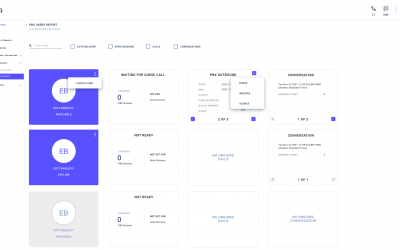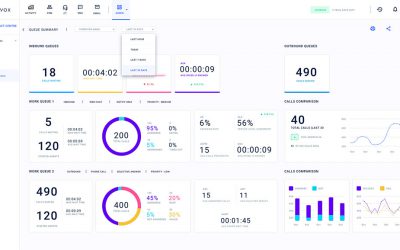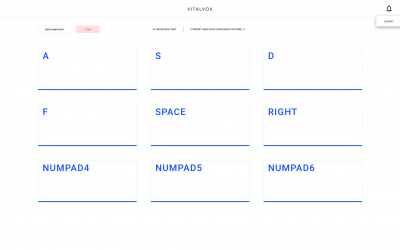Introduction
Open source VoIP solutions have long been a cornerstone for call centers seeking flexibility, cost efficiency, and innovation. As artificial intelligence (AI) reshapes the communication landscape, one question continues to surface: Where does Asterisk fit in the AI era? This blog explores how Asterisk, the popular open-source PBX system, is evolving in step with AI technologies—and why it still holds a strategic place in modern contact center environments.
The Enduring Power of Asterisk in VoIP
Despite the rise of cloud-native platforms and AI-driven communication tools, Asterisk remains one of the most powerful and customizable open source VoIP solutions. Developed by Digium and backed by a vibrant global community, Asterisk supports a wide range of VoIP protocols, codecs, and integrations—making it incredibly adaptable.
More importantly, its modular architecture enables businesses to shape their telephony systems to fit unique requirements. Whether you’re building IVR systems, call queues, or complex routing algorithms, Asterisk provides the foundation to innovate without being locked into vendor-specific constraints.
The Rise of AI in VoIP: A Game-Changer
The AI era has introduced game-changing capabilities such as real-time transcription, intelligent call routing, speech analytics, and conversational IVRs. Call centers now rely heavily on machine learning to boost performance, automate repetitive tasks, and enhance customer experience.
So, how does this affect Asterisk?
Fortunately, Asterisk is not left behind. While it doesn’t come pre-bundled with AI features, its open architecture allows seamless integration with AI services like Google Cloud Speech-to-Text, Amazon Lex, or proprietary NLP models. This makes Asterisk a flexible launchpad for AI-driven applications—especially when paired with platforms like FreePBX or custom-built APIs.
Why Open Source VoIP Solutions Still Matter
In an era of SaaS overload, the importance of open source VoIP solutions can’t be overstated. They offer:
-
Control: Total ownership over data, architecture, and compliance.
-
Customization: Tailor-made workflows and integrations with AI platforms.
-
Cost Efficiency: No recurring license fees or vendor lock-in.
When AI is integrated into a flexible platform like Asterisk, organizations can build truly intelligent call center operations without sacrificing independence or budget.
Asterisk + AI: Use Cases in Modern Call Centers
Here are some impactful ways Asterisk combines with AI technologies:
-
Conversational IVRs: Replace traditional menu trees with natural language understanding.
-
Speech Analytics: Use AI tools to transcribe and analyze conversations for quality assurance.
-
Predictive Dialing: Combine Asterisk’s dialing features with AI models to improve agent efficiency.
-
Sentiment Analysis: Leverage AI to gauge customer emotions in real time and escalate when needed.
Each of these use cases demonstrates how Asterisk can remain relevant and future-ready with smart AI integration.
Challenges and Considerations
While Asterisk offers immense flexibility, integrating AI features isn’t plug-and-play. You’ll need:
-
Skilled developers for API and speech engine integrations.
-
Robust server infrastructure for handling real-time processing.
-
Security protocols to protect sensitive data flowing through AI services.
However, the long-term benefits—enhanced customer experience, lower operational costs, and deeper insights—make the effort worthwhile.
Future-Proofing with Open Source Flexibility
As more businesses prioritize digital transformation, combining open source VoIP solutions like Asterisk with AI creates a future-proof strategy. Instead of being constrained by closed systems, call centers can innovate on their own terms—evolving as new AI technologies emerge.
Moreover, open-source communities often lead the way in experimentation and best practices. With Asterisk, you’re not just using a tool—you’re joining a global innovation ecosystem.
Conclusion: Where Asterisk Stands Today
Asterisk continues to play a pivotal role in modern call center infrastructure. When paired with the right AI tools, it transforms from a basic PBX into a powerful intelligent communications platform. It’s this unique combination of flexibility, control, and integration potential that keeps Asterisk not only relevant—but essential—in the AI-driven era of VoIP.
Contact Us
Ready to bring AI into your call center using open source VoIP solutions like Asterisk? Our experts specialize in integrating advanced AI tools with flexible telephony systems tailored to your business needs. Reach out today for a free consultation and discover how you can elevate your communication strategy.
1. Is Asterisk still a good choice for VoIP in 2025?
Yes, Asterisk remains a reliable and widely used open source VoIP solution in 2025. Its flexibility, active community, and compatibility with modern AI integrations make it a future-ready choice for many businesses, especially those seeking full control over their telephony systems.
2. Can Asterisk be integrated with AI tools?
Absolutely. Asterisk supports integration with popular AI tools and services such as Google Dialogflow, Amazon Lex, IBM Watson, and custom machine learning models. These integrations enable features like conversational IVRs, speech-to-text, and intelligent call routing.
3. What are the benefits of using open source VoIP solutions over commercial platforms?
Open source solutions like Asterisk offer greater customization, no licensing fees, and full data ownership. Unlike commercial platforms, you’re not locked into a specific vendor, giving your business more control and flexibility to adapt quickly to new technologies like AI.
4. Is Asterisk suitable for small and medium-sized businesses (SMBs)?
Yes, Asterisk is highly scalable and can be customized to meet the needs of SMBs and large enterprises alike. For smaller organizations, it provides an affordable way to implement advanced call center features without hefty recurring costs.
5. What kind of technical skills are needed to deploy Asterisk with AI features?
Basic deployment of Asterisk requires knowledge of Linux, networking, and VoIP protocols. For AI integration, additional skills in APIs, cloud platforms, and scripting (e.g., Python or JavaScript) may be needed. Many companies partner with VoIP experts to handle these integrations smoothly.



